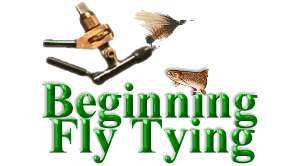|
For the months of June, July and August, the most common item in the
stomachs of trout, bass (small mouth and largemouth), walleye and panfish
like crappie, perch and bluegills was a mix of adult and nymph damsel and
dragon flies. Yes, I said walleyes. And, the nymphs were still
prominent in stomach samplings during the spring, fall and winter months.
Reason enough for me to fish a damsel or dragon fly nymph on the local
lakes.

Even the biologists were surprised that fish noted as minnow eaters like
walleyes, crappie and largemouth bass were eating more nymphs than
minnows. Another thing that caught their attention was the number of
northern pike that had a fairly large percentage of damsel and dragon fly
nymphs in their stomachs. Seems these fish are opportunistic too.
Why not? Dragon and damsel flies live in the weeds and grow to meal
sized treats fairly fast. Fish like to look for food in the weeds, so
why wouldn't they eat the most common big nymph in their dining room?
Maybe the pike think of them as desert?
With this in mind, maybe it's a good idea to have a few imitations of
these two treats in your fly box. You might be surprised at how easy
they are to tie. It only takes a few materials to do the job.
Before we get to the tying steps, it has been brought to my attention that
there is a web site that has hook conversion charts and fly patterns that
you might enjoy looking at. As you learn the basic techniques of each
style of fly, you might enjoy trying a few others in the same category that
use the same techniques. When you have a moment, check out this
site.
Now, to the nymph patterns you panfishermen have been looking for.
List of materials: Marabou Damsel:
Hook: Nymph, 1xlong; Mustad 9671, Tiemco 5262
or 200R, Eagle Claw L063 or equivalent. Size 10 to 18.
Thread: Gudebrod 3/0 black, brown or olive, or
equivalent.
Thorax: Marabou, same as body.
Rib: Clear Angler's Choice Body Stuff, midge Larva
Lace, V-Rib or equivalent.

Wing Case: Strip of fibers from a turkey tail feather
or pheasant tail feather. If you want some flash, you can use
pearl tinsel for a wing case.
Eyes: Pearl or black plastic craft bead string, brass
bead chain or melted monofiliment.
Tying steps:
1. Start thread and tie rib material to the hook.

2. Attach a pair of eyes to the front of the hook using a figure 8 wrap.
(If the eyes turn a little on the hook, you can straighten them out by
hand before you continue.)
 Note the size of the eyes!
Note the size of the eyes!
Make plenty of wraps to ensure the eyes stay
firmly in place. A drop of super glue will help hold the eyes in place.

3. Attach a small bunch of marabou to the hook, tying it down to the
place where the body will end (approximately 1/3 hook shank length back
from the eye). It should extend beyond the hook bend about half the
length of the hook shank. You can either tie it down where the body will
end (see picture) or tie it down from the eyes to that point, whichever
is easier for you. I usually use the thread tie down point as a visual
reference for body dimensions, thus I tie it in where the thorax begins.

|





















